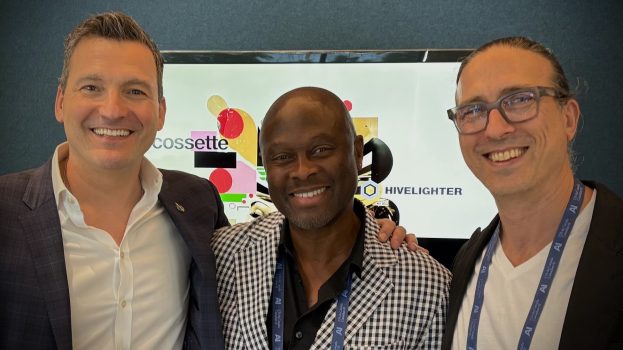This story originally appeared in the Summer 2019 issue of strategy.
Bell Media, Corus Entertainment and CBC all operate digital streaming products. Each has a different model and a massive content library, but are their marketing strategies doing them justice?
Corus’ StackTV is the latest offering, revealed during this year’s Fall TV Upfronts. Positioned as a “virtual BDU,” it offers streaming on multiple “channels,” both live and on-demand, as an add-on for current Amazon Prime subscribers. It will go live in the fall. Over at Bell, cable subscribers can view its shows digitally via TV Everywhere and its separate SVOD, Crave. CBC, meanwhile, offers a mix of digital live-streaming and on-demand shows through Gem, introduced recently.
They’re the Davids to U.S.-based Goliaths. Netflix and Amazon don’t release official Canadian numbers, but a 2018 MTM study puts penetration at 60% and 12%, respectively. Crave’s official subscriber count as of February was 2.3 million. CBC would not disclose numbers for Gem.
Sarah Thompson, CSO at Mindshare, tells strategy the deck is stacked against homegrown players. “When you look at the top app downloads for media, [Canada] isn’t even in the top 20. The value proposition for Canadians needs to be clearer.”
Tim Knapp, senior director of marketing at CBC says following Gem’s initial push, “we realized marketing an OTT service is a 365 days a year exercise.” The streamer taps CBC’s existing research team and targets segments most likely to engage with certain shows, such as Northern Rescue. It will typically use performance data to reach viewers on digital, he says.
But Havas chief of media Alex Panousis, speaking to strategy from the Banff World Media Conference, says that industry conversations reveal the message may not be getting out.
“We were talking to a group that loved Workin’ Moms, but had no idea it was on the CBC. They found it on Netflix.”
Netflix persistently markets to its subscriber base through digital ads and ongoing email marketing. And while the SVOD appears to be the most effective at employing D2C marketing techniques of building extensive CRM systems, Panousis says mass can be just as effective.
“Amazon did an OOH push this year for the show Hanna. Did it work? It got me to sample.”
Bell Media uses mass and targeted channels to position Crave as a destination for big TV moments, says Jon Arklay, SVP of Bell Media agency, brand, creative and marketing. For example, jumping off the popularity of Game of Thrones, it debuted its “Big Moments” campaign on TV and digital two weeks before the series finale. On top of mass, Arklay says it’s in “constant communication” with subscribers through email and targeted social marketing.
“Growth [for streamers] is going to come from getting mass awareness behind ‘cultural moments’ content like Game of Thrones, supported by targeted conversion strategies,” says PHD managing director of marketing science Matt Devlin.
Corus hasn’t yet unveiled its marketing plans for StackTV. But Drew Robinson, VP of content distribution, says Corus chose to partner with Amazon because of its data and reach capabilities.
“They have a marketing powerhouse behind them,” he says.
Devlin says he’ll be watching StackTV’s marketing strategy intently, but adds that, overall, broadcasters need to embrace these services full-force.
“[They] arguably have more depth of compelling content. What they maybe don’t have yet is a full commitment to making the platforms grow. Balancing legacy revenue lines with emerging ones is a tricky proposition,” he says.























